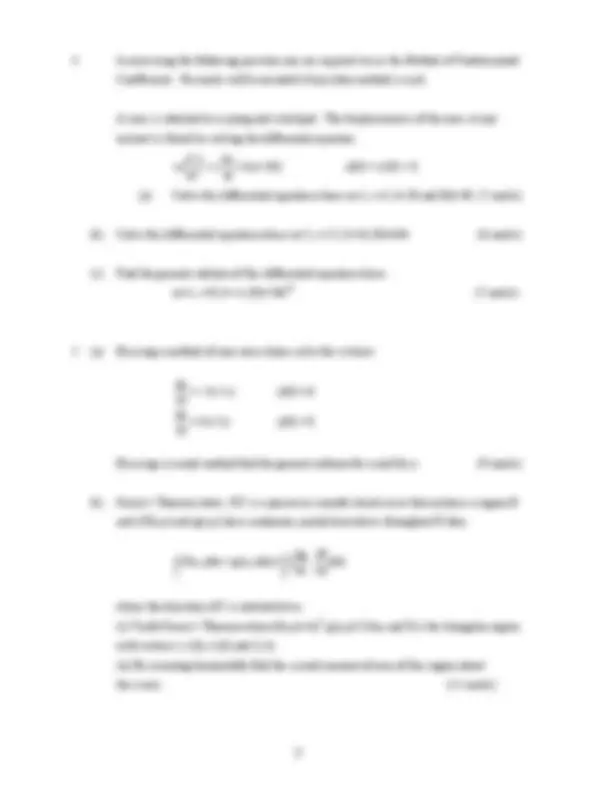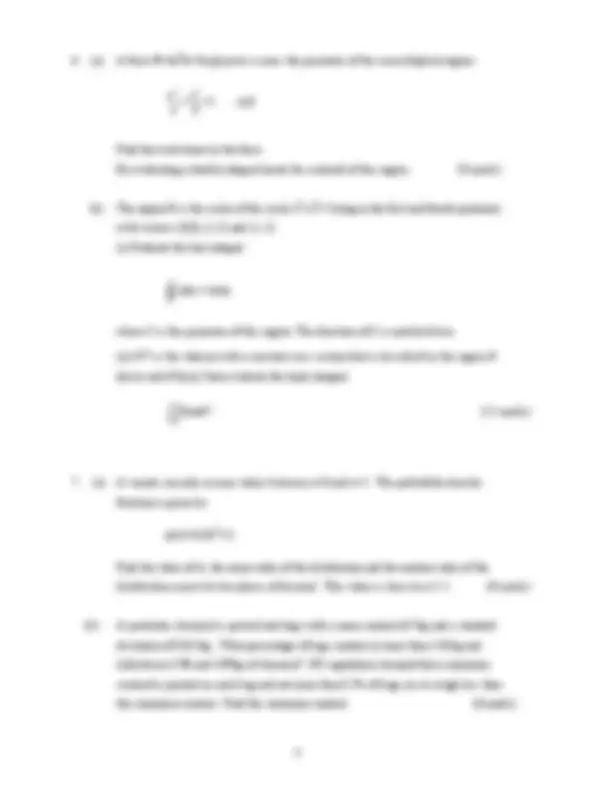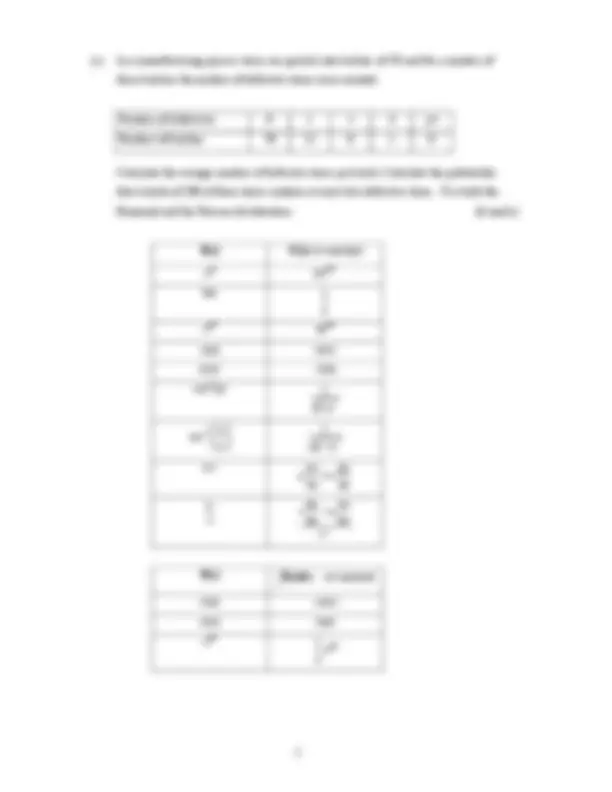





Study with the several resources on Docsity

Earn points by helping other students or get them with a premium plan


Prepare for your exams
Study with the several resources on Docsity

Earn points to download
Earn points by helping other students or get them with a premium plan
Community
Ask the community for help and clear up your study doubts
Discover the best universities in your country according to Docsity users
Free resources
Download our free guides on studying techniques, anxiety management strategies, and thesis advice from Docsity tutors
Main points of this past exam are: Density Function, Differential Equation, Three Term Taylor Method, Approximation, Error, Differential Equation, General Solution, Maximum, Minimum Values, Extreme Values HoldDensity Function, Differential Equation, Three Term Taylor Method, Approximation, Error, Differential Equation, General Solution, Maximum, Minimum Values, Extreme Values Hold
Typology: Exams
1 / 6

This page cannot be seen from the preview
Don't miss anything!




Answer FIVE questions.
All questions carry equal marks.
Examiners: Mr. P. Clarke
Prof. M. Gilchrist
Mr. T O Leary
dy +3y 12 y(0) 1 dx
By using the Three Term Taylor Method with a step of 0.1 estimate the value of y
at x=0.1. Calculate the error in this approximation. (8 marks)
(b) Find the general solution of the differential equation
2
2
d i di +4 +4i=50cos3t dt dt
Express the steady state part of the solution as a single periodic function of the form
Rsin(3t-α). Write down the maximum and minimum values of this function and find
the smallest positive values of t for which these extreme values hold. (8 marks)
(c) Show that the expression
(6x
2 -6y)dx-(6x-8y)dy
is the total derivative of a function. Find this function. Hence solve the exact
differential equation
(6x
2 -6y)dx-(6x-8y)dy=0 y(1)=2. (4 marks)
x=4,y=1. The series is to contain terms deduced from second order partial derivatives.
(7 marks)
(b) Find the partial derivatives of u and v with respect to x and y where
-1 2y u=sin x
v=
2 2 x -4y.
(i) If T=f(u) is an arbitrary function in u show that
x y 0 x y
(ii) Estimate the value of v if the values of x and y were estimated to be 5 and 2
with maximum errors of 0.06 and 0.03, respectively. (8 marks)
(c) Find the minimum value of V=x
2 +2xy where y=6+x. Eliminate one of the variables
and use a Lagrangian Multiplier. (5 marks)
(i) 2
(s+1)(s +4)
(ii) 2
4s+
(s-1)(s-3)
(10 marks)
(b) By using Laplace Transforms solve the differential equation
2 t 2
d y dy +2 5y 16e y(0)=y (0)= dt dt
(c) Find the zero and the poles of the transfer function L[f(t)]
L[y] where
2 t
(^2 )
d y dy 7 40y 34 ydt f(t) y(0) y (0) 0 dt dt
(4 marks)
2 i +24xy j moves a mass the perimeter of the semi-elliptical region
2 2 x y
x≥ 0
Find the work done by the force.
By evaluating a double integral locate the centroid of this region. (9 marks)
(b) The region R is the sector of the circle x
2 +y
2 =5 lying in the first and fourth quadrants
with vertices (0,0), (1,2) and (1,-2).
(i) Evaluate the line integral
C
2ydx 4xdy
where C is the perimeter of this region. The direction of C is anticlockwise.
(ii) If V is the volume with a constant cross section that is described by the region R
above and if 0≤z≤2 then evaluate the triple integral
V
6xzdV
(11 marks)
function is given by
p(x)=A(3x
2 +1).
Find the value of A, the mean value of the distribution and the median value of the
distribution correct to two places of decimal. This value is close to x=1.5. (8 marks)
(b) A particular chemical is packed into bags with a mean content of 5kg and a standard
deviation of 0.015kg. What percentage of bags contain (i) more than 5.02kg and
(ii)between 4.98 and 4.99kg of chemical? EU regulations demand that a minimum
content be printed on each bag and not more than 0.2% of bags are to weigh less than
this minimum content. Find this minimum content. (6 marks)
(c) In a manufacturing process items are packed into batches of 50 and for a number of
these batches the number of defective items were counted.
Number of defectives 0 1 2 3 ≥ 4
Number of batches 70 21 8 1 0
Calculate the average number of defective items per batch. Calculate the probability
that a batch of 200 of these items contains at most two defective items. Use both the
Binomial and the Poisson distributions. (6 marks)
f(x) f ′ (x) a=constant
x
n nx
n-
lnx
x
e
ax ae
ax
sinx cosx
cosx -sinx
sin
2
1-x
1 x sin a
2 2
a -x
uv
dx
du v dx
dv u +
v
u
2 v
dx
dv u dx
du v −
f(x)
f(x)dx a=constant
sinx -cosx
cosx sinx
e
ax
a
e
ax